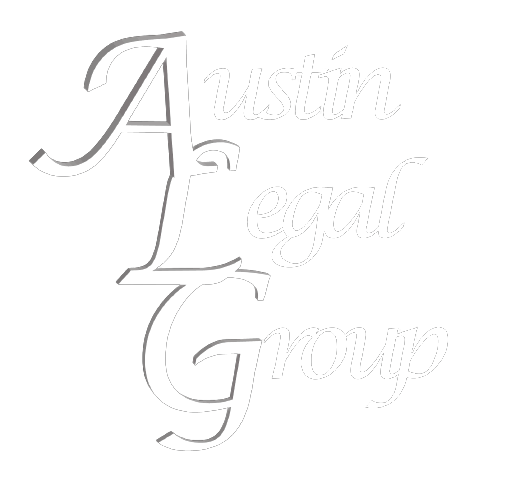For years, companies wishing to sell their shares to the public registered new shares with the Securities and Exchange Commission (SEC) using Form S-1 registration statements because they allow companies to generate revenue and provide a path towards becoming a reporting company after the registration statement has gone effective. However, in recent years the SEC has made significant changes to Regulation A, also known as Reg A or Regulation A+, to make it a viable option for those wishing to file an offering to generate more revenue and potentially become an SEC reporting company.
The Jumpstart Our Business Startups Act (JOBS Act) contains provisions designed to assist small businesses and growing companies in obtaining capital, including modifying restrictions on making general solicitations when making a private offering, creating a new exemption from registration for “crowdfunding,” relaxing certain requirements for initial public offerings, and increasing the number of shareholders a company is permitted to have before it must register with the SEC. The SEC adopted new rules amending Title IV of the JOBS Act on March 25, 2015.
Prior to the 2015 rules going into effect, issuers utilizing Regulation A were limited to selling no more than $5 million in securities within a 12-month period. Currently, Regulation A exempts certain companies offering up to $75 million in securities within a 12-month period from the registration requirements of the Securities Act of 1933 (the Securities Act).
Regulation A is broken up into “Tier 1” and “Tier 2.” Each tier has its pros and cons, and determining which tier to use can be a difficult decision. A brief summary of each tier is below. Please contact our office and speak with one of our corporate and securities attorneys for more information.
Issuers Eligible to Use Regulation A
- Regulation A is limited to issuers organized in, and with their principal place of business in, the United States or Canada.
- The SEC issued final rule amendments in December 2018 permitting companies reporting under Section 13 or 15(d) of the Securities and Exchange Act of 1934 (the Exchange Act) to offer securities pursuant to Regulation A. Previously, offerings pursuant to Regulation A were expressly limited to non-reporting companies.
Issuers Ineligible to Use Regulation A
Regulation A is not available to any company that:
- Is a blank check company;
- Is an investment company registered or required to be registered under the Investment Company Act of 1940;
- Is seeking to offer and sell asset-backed securities or fractional undivided interests in oil, gas or other mineral rights;
- Has been subject to any SEC order under Section 12(j) of the Exchange Act (suspension or revocation of securities registration) entered within the past five years;
- Has not filed ongoing reports required by a previous Regulation A offering in the preceding two years; or
- Is disqualified under “bad actor” disqualification rules.
Eligible Securities
- Securities that may be offered are limited to equity securities, including stock, warrants, debt securities and debt securities convertible into or exchangeable into equity interests, including any guarantees of such securities.
- Excludes asset-backed securities
Testing the Waters
Regulation A permits an issuer and its authorized representatives to communicate orally or in writing with potential investors to determine whether there is any interest in a contemplated securities offering (also known as testing the waters) either before or after filing a Regulation A Offering Statement (analogous to a prospectus in a registration statement), provided that any such communications must contain the information required by Rule 255 of the Securities Act.
Failing to comply with the requirements of Rule 255 may subject the issuer and its representative to liability under the antifraud provisions of the federal securities laws. Issuers and their representatives are encouraged to have all such communications reviewed by an attorney prior distribution or publication.
General Facts About Tier 1 Offerings Under Regulation A
- A Tier 1 Offering is exempt under the Securities Act and provides for offering up to $20 million in securities in a 12-month period, with not more than $6 million worth offered by existing security holders that are affiliates of the issuer.
- Sales by all selling security holders in Tier 1 Offerings are limited to no more than 30% of the offering.
- Issuers that engage in Tier 1 Offerings are required to file a form 1-Z Exit Report with the SEC within 30 days of the termination or completion of the offering.
- Tier 1 Offerings are subject to state securities registration and qualification requirements.
- Financial statements do not need to be audited.
General Facts About Tier 2 Offerings Under Regulation A
- A Tier 2 Offering is exempt under the Securities Act and provides for offering up to $75 million in securities in a 12-month period, with not more than $22.5 million worth offered by existing security holders that are affiliates of the issuer.
- Sales by all selling security holders in Tier 2 Offerings are limited to no more than 30% of the offering.
- Issuers that engage in Tier 2 Offerings are subject to additional ongoing reporting obligations, as discussed in further detail below.
- Tier 2 Offerings are federally preempted from oversight by state securities regulators. However, notice filings and associated fees may still be required.
- Tier 2 Offering Statements are required to include audited financial statements.
- Purchasers in Tier 2 Offerings are subject to higher suitability standards or investment limitations.
- Tier 2 Offerings impose a limitation on the amount of securities non-accredited investors can purchase of no more than 10% of the greater of the investor’s annual income or net worth (this limitation does not apply if the securities will be listed on a national securities exchange upon qualification).
Reporting Requirements for Tier 2 Issuers
Issuers engaging in Tier 2 Offerings that are not already subject to the SEC’s reporting requirements under Section 13 or 15(d) of the Exchange Act are required to do the following:
- File annual reports on Form 1-K, semiannual reports on Form 1-SA, and current event reports on Form 1-U.
- Provide audited financial statements in the offering statement and annual reports.
- File a special financial report to cover financial periods between the most recent period included in a qualified Regulation A offering statement and the issuer’s first required reporting period.
- Include information about sales in the terminated or completed offering and update certain issuer information in the first annual report after termination or completion of a qualified offering, or in the Form 1-Z exit report.
Regulation A also permits a Tier 2 issuer to register a class of securities under Section 12(g) or 12(b) of the Securities Exchange Act by using a Form 8-A short form registration statement following the qualification of a Tier 2 Regulation A offering statement. The offering statement must include the narrative disclosure that follows Part I of Form S-1 or Form S-11.
Disclaimer
Austin Legal Group, APC (ALG) does not make any representations or warranties, expressed or implied, as to the accuracy, completeness or fitness for a particular purpose of this or any article. This article is meant for general informational purposes only and should not be construed as, and does not constitute, legal advice. No one should take any action regarding the information in this article without first seeking the advice of an attorney. This article does not create an attorney-client relationship. No attorney-client relationship will exist with ALG or any attorney affiliated with it unless a written contract is signed by all parties and any conditions in such contract are satisfied. Please reach out to Gina M. Austin, Esq. by phone at (619) 924-9600 or by email at gaustin@austinlegalgroup.com for more information.




